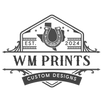The world of manufacturing and production has witnessed a revolution over the past few decades, all thanks to the advent of 3D printing. From its nascent stages as a mere concept to the complex and diverse applications we see today, 3D printing has become an integral part of modern industry.
The Birth of 3D Printing
3D printing, also known as additive manufacturing, began as a concept in the 1980s. The idea was to create objects layer by layer using a digital model. Early adopters envisioned a world where traditional manufacturing processes could be upended by the ability to 'print' anything from intricate prototypes to fully functional end-user parts. These early attempts laid the groundwork for the profound changes that were to come.
From Prototyping to Production
Initially, 3D printing was mainly used for rapid prototyping. Designers and engineers could now bring their ideas to life efficiently and cost-effectively. As technology advanced, the capabilities of 3D printers expanded, allowing them to produce more robust parts with greater material variety and precision.
Today, 3D printing is utilized across various industries, including automotive, aerospace, healthcare, and consumer goods. Companies are using 3D printing to produce everything from car parts and aerospace components to medical implants and fashion accessories. The possibilities seem endless, and new applications emerge regularly.
Changing the Manufacturing Landscape
The shift from traditional manufacturing to a more decentralized, on-demand production model has opened up new avenues for small businesses and innovators worldwide. One such innovation is the Lyman Type Prep Tools Holder, a testament to how 3D printing makes custom and specialized tools more accessible. This particular product exemplifies the personalized manufacturing approach that 3D printing technology facilitates.
3D printing offers the ability to customize without the constraint of economies of scale, allowing manufacturers to cater to niche markets that were previously unfeasible.
The Future of 3D Printing
As 3D printing technology continues to evolve, its applications are likely to expand even further. Advances in materials science are paving the way for 3D-printed electronics, bio-printing human tissues, and even food production. As costs reduce and technology becomes more accessible, we might see 3D printers becoming a household item, similar to the evolution of computers.
The next few years will be pivotal in exploring the full potential of 3D printing. Embracing this technology will likely be integral to the success of many industries and could potentially reshape how we think about production and design.
For those interested in exploring 3D printing and its applications, visit WM Prints for a range of products and innovations. As the realm of 3D printing continues to grow, staying informed will be key to understanding and leveraging its transformative power.





